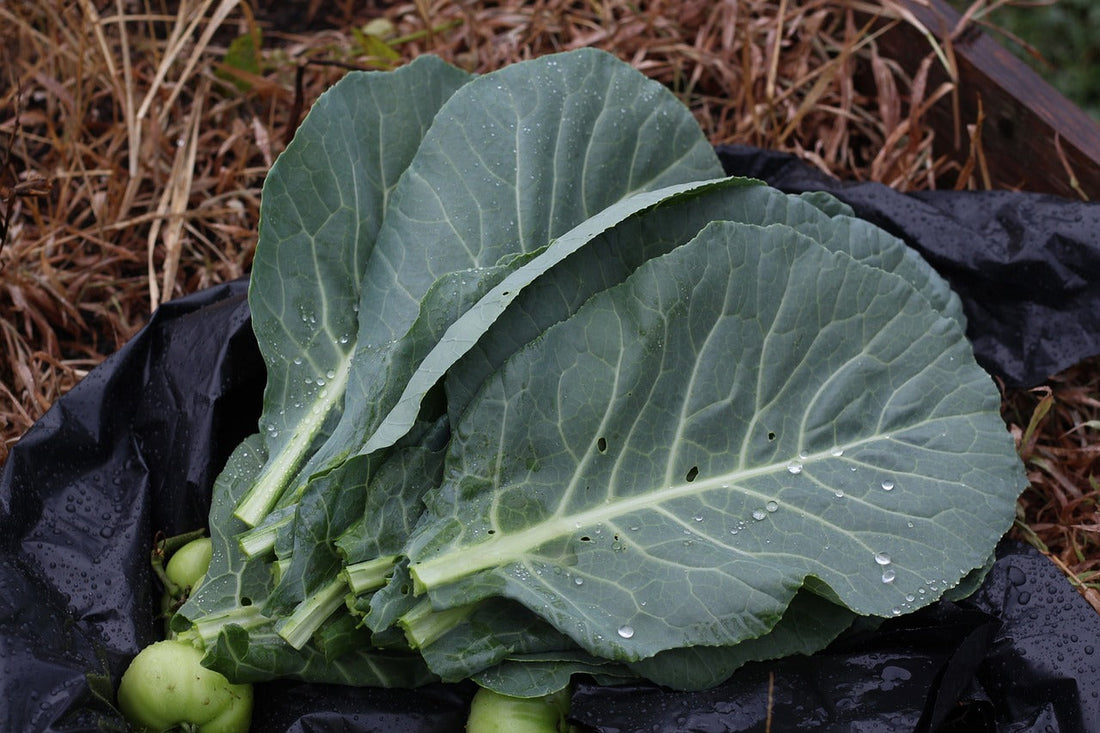Bearded dragons need a specific diet to stay healthy and happy. They are an exotic creature, so it’s important to mimic the foods they would eat in the wild as closely as you can. This includes insects, such as Dubia roaches and crickets (live, of course). Additionally, a really important part of a healthy diet for a bearded dragon is greens. But you can’t just give them any salad and call it a day. It’s important to choose the right greens — calcium rich, nutrient dense, and low in oxalates, with more calcium than phosphorus.
So, based on these important qualifications, can bearded dragons eat collard greens? Let’s find out.
Can Bearded Dragons Eat Collard Greens?
Yes, bearded dragons can eat collard greens. In fact, these nutrient-dense, calcium-rich greens are packed with vitamins and minerals your dragon needs, while being free of junk they don’t (like sugar, fat, or high amounts of oxalic acid and oxalates).
How Often Can Bearded Dragons Eat Collard Greens?
Bearded dragons can safely eat collard greens every day. It’s a good idea to switch up their food to give them a varied diet, so you can alternate with other staple greens, including prickly pear (cactus pad), endives, mustard greens, and turnip greens.
Bearded dragons eat different quantities of food based on their age. For example, babies generally plow through dozens and dozens of feeder insects as they are growing and developing. While they still eat insects as adults, it’s less frequent, and tapers off from once a day to a few days a week.
Regarding greens, bearded dragons should be offered a salad filled with nutrient-dense greens and other healthy veggies such as bell pepper or sweet potato on a daily basis. Adult dragons — who should be eating more greens than bugs — may eat two or even three salads a day, depending on their appetite.

Benefits of Collard Greens for Bearded Dragons
Collard greens are a nutrition powerhouse for bearded dragons. Here are the top benefits:
- Rich in calcium, which promotes healthy muscles, bones, and overall health.
- Great calcium to phosphorus ratio (14.5 to 1), which is great because too much phosphorus can prevent calcium absorption.
- Rich in vitamins A, C, E, and K, which contributes to healthy eyes, a strong immune system, and healthy blood and muscles.
- Fiber and folate, which promote healthy digestion and helps with constipation.
- Antioxidants, which boost the immune system and can help prevent cancer and other diseases by reducing the oxidative stress on the body. Antioxidants also promote healthy heart and liver function.
In addition, collard greens are fairly low in oxalates, which bind with calcium and prevent absorption. Generally, bearded dragons should have limited amounts of foods that are high in oxalates because they can contribute to metabolic bone disease, which causes a deterioration of bones and muscles due to lack of calcium.
Because calcium is so important for your bearded dragon's health, it's important to supplement calcium in their diet. The easiest way to do this is to sprinkle calcium powder — like Dragon's Diet Reptile Greens & Calcium Powder — on their salad or live feeders at least once a day.
How to Serve Collard Greens to Your Bearded Dragon: Cooked? Organic? Raw?
So now that you know that collard greens are a wonderful staple green for bearded dragons, how do you serve them? Do you cook them? Can bearded dragons eat collard greens raw? Do they have to be organic?
Serving Collard Greens
Collard greens have a fairly tough stem that may be difficult for some bearded dragons, especially younger beardies, to chew. To make it easier for them, you can rip the greens from the stem and shred or chop them into smaller pieces. Don’t forget to rinse the collard greens first to remove any dirt.
Offer the raw greens on their own or toss them with some other greens and veggies for a delicious salad. Top them off with raspberries, blueberries, or apple chunks to add a bit of sweetness plus some additional vitamins and minerals.
Cooking Collard Greens
Bearded dragons can eat raw collard greens, but you can lightly sauté them if you want to. Just don’t use any oil, seasoning, or other ingredients — not even salt or pepper.
Organic vs Non Organic Collard Greens
In general it’s better to feed your bearded dragon organic produce. Non organic produce is sprayed with pesticides, which can harm your bearded dragon. Leafy greens like collard greens and kale are particularly prone to high levels of pesticides. Since greens are a big part of your bearded dragon’s diet, it’s safer to choose organic when you can.
Other Greens for Bearded Dragons
In addition to collard greens, here are some of the best greens your dragon can eat on a daily basis:
- Dandelion greens
- Cactus pad (aka prickly pear)
- Endives
- Mustard greens
- Turnip greens
Similar to collard greens, these greens are nutrient-dense, rich in calcium, and have little if any harmful properties such as oxalates or phosphorus.
Takeaway: Bearded dragons can eat collard greens every day. They are an excellent source of calcium, fiber, and antioxidants, along with vitamins A, C, and K. Serve them fresh, raw, and organic, shredded or chopped into smaller pieces.








